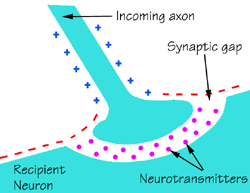
Washington University Researchers use Stereo Investigator to Study Axonal Transport in Parkinson’s Model
Journeying along axons, microscopic powerhouses known as mitochondria provide cells with the energy they need to function. When something goes wrong with the axonal transport and mitochondria isn’t delivered, the system fails, and the cell body dies.
Scientists in the Department of Anatomy and Neurobiology at the Washington University School of Medicine in St. Louis study the cellular bases of neurological disorders. Their recent research focuses on Parkinson’s disease and identifies impaired axonal transport as a possible key player in this neurological disorder.
The research group, of Dr. Karen L. O’Malley, Dr. Jeong Sook Kim-Han, and Dr. Jo Ann Antenor-Dorsey studied axonal transport in dopamine (DA) neurons in the mouse brain—the cells most affiliated with Parkinson’s disease. They localized cell axons by using a microchamber system that separated axons from cell bodies and dendrites. They also introduced 1-methyl-4-phenylpyridinium ion (MPP+), a toxin known to disrupt axonal function and mimic Parkinson’s disease.
Stereo Investigator helped them quantify TH-positive cell bodies and neurites. As early as 12 hours after MPP+ treatment, they saw breaks in axons. After 24 hours, they began to see a significant reduction in cell bodies. “This study underscores the necessity of developing therapeutics aimed at axons as well as cell bodies so as to preserve circuitry and function,” they say in their paper “The Parkinsonian Mimetic, MPP+, Specifically Impairs Mitochondrial Transport in Dopamine Axons, published in the Journal of Neuroscience.
The use of Stereo Investigator saved the researchers time and hard drive space, according to Dr. Kim-Han. “We used to count cells after acquiring images from a fluorescent microscope and saving it to a computer, which took long time and a lot of space on the computer,” she said. “Also, the data was more convincing since the area for counting was selected automatically with the number of fields assigned.”
Read the full paper “The Parkinsonian Mimetic, MPP+, Specifically Impairs Mitochondrial Transport in Dopamine Axons“, in the Journal of Neuroscience.
[The Journal of Neuroscience, 11 May 2011, 31(19): 7212-7221; doi: 10.1523/ JNEUROSCI.0711-11.2011]
{IMG: Synapse Diagram – This file is licensed under the Creative Commons Attribution-Share Alike 1.0 Generic license}



